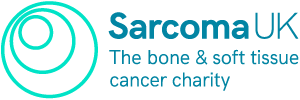Osteosarcoma is a type of bone sarcoma that commonly occurs in children, teenagers and young adults.
Osteosarcoma will often affect the knee, thigh bone, shin bone or upper arm.
Please note that this information is specific to osteosarcoma that occurs in children.
Signs and symptoms
Symptoms of osteosarcoma can vary depending on the size and location of your child’s tumour.
- Bone pain, particularly occurring at night
- A mass or swelling
- Restricted movement in a joint
Symptoms can sometimes be confused with more common problems such as a sports injury or growing pains.
Diagnosis
Your GP will examine your child and may arrange tests or X-rays. If your GP suspects that your child may have a bone tumour, they should refer your child to a specialist centre or hospital for further tests.
Your child will have a physical examination at the specialist centre or hospital. They may also be given a blood test to check their general health.
The doctor may conduct an X-ray of the bone that is in pain, which is often used to diagnose a bone tumour.
Your child may also have a number of tests, including a chest X-ray, a biopsy, an MRI or a CT scan. You can read more about scans and tests here.
Treatment
Surgery
During surgery, the surgeon will remove the tumour and will aim to take out an area of normal tissue around it too. This is known as taking a margin. To achieve this margin of normal tissue, your child may receive limb-sparing surgery. The aim of this surgery is to preserve the limb where the tumour is rather than amputating it.
Limb-sparing surgery involves taking out the affected bone and replacing it with a bone graft (bone taken from another part of the body). Unfortunately, it’s not always possible to use limb-sparing surgery. Sometimes the cancer may spread from the bone to the nerves and blood vessels around it. If this happens the only way to treat the cancer may be to remove part of the limb known as a partial amputation. Your child may need to have all of their limb removed. This is called a full amputation.
Chemotherapy
Chemotherapy uses anti-cancer drugs to destroy cancer cells. It is sometimes used before surgery to reduce the size of the tumour so it can be operated on and removed. This can be useful to treat large tumours and can prevent the need to have the limb either partially or fully amputated.
Chemotherapy is also sometimes used after surgery. In this case, the aim is to kill off any local cancer cells which remain in the area of the tumour. The main types of chemotherapy used to treat osteosarcoma are doxorubicin, cisplatin, high-dose methotrexate and ifosfamide.
Your child may also be given a course of a new drug called mifamurtide (Mepact) which may help to reduce the risk of osteosarcoma coming back. This treatment is not relevant for everyone; however, children, adolescents and young adults should be able to have mifamurtide if:
- Their tumour is high grade and has not spread to another part of the body and
- They have had an operation to remove their tumour and
- They are also having chemotherapy with multiple drugs
Radiotherapy
Radiotherapy uses high-energy radiation beams to destroy cancer cells. Osteosarcoma is not usually sensitive to radiotherapy; however, this type of treatment may be used after surgery in some cases, if there is a risk that the cancer has spread to the surrounding soft tissue.
After treatment
Many children with osteosarcoma are cured, although they may need to have surgery to lengthen their limb as they grow. Your child will have regular check-ups and X-rays as needed at an orthopaedic specialist centre.












